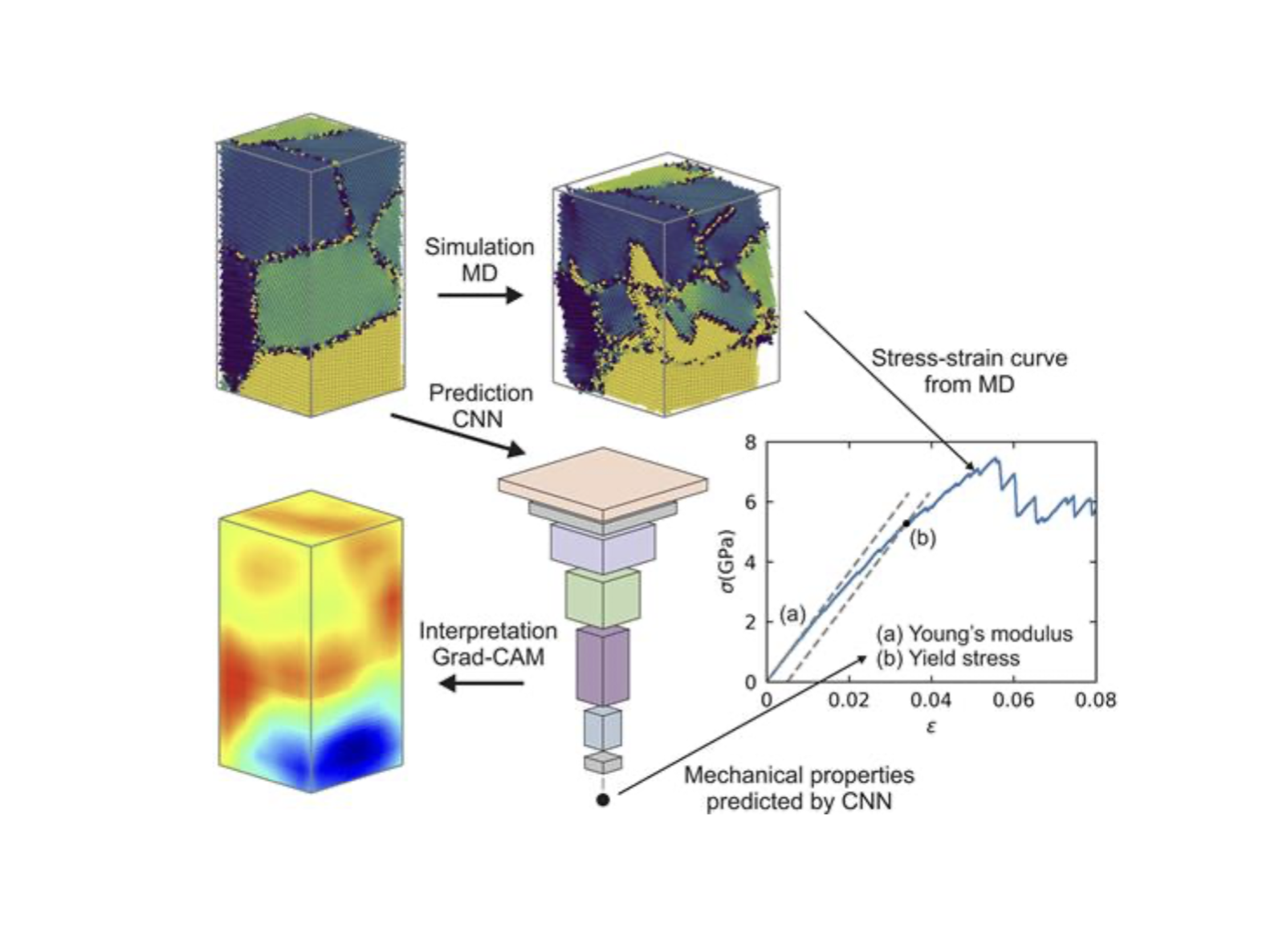Abstract: Machine learning models have proven to be powerful tools to discover links between microstructure and properties of materials, but the black box nature of the models limits the physical insights one might gain from them. Here, we study the relationship between the atomic structure and the elastic and plastic properties of polycrystalline tantalum nanopillars under uniaxial compression by means of interpretable machine learning. We first train a convolutional neural network using data from molecular dynamics simulations to learn the mapping from the sample-specific initial atomic structure to features of the stress–strain curve. The model is able to predict the values of the Young’s moduli of the pillars very well, resulting in slightly better predictions than those obtained from classical models (Voigt, Reuss, and Hill), as well as from a newly developed volume integral method. It also has some success in learning the yield stress values. Interpreting the network by employing the gradient-weighted class activation mapping method reveals a correlation between the resulting attention map and the local, grain orientation dependent Young’s moduli, showing that the predicted value of the global Young’s modulus is mainly determined by grains whose local Young’s moduli deviate significantly from the average. We also analyze the attention maps for the yield stress prediction and conclude that for the nanocrystalline samples at hand without pre-existing dislocations, grain boundaries tend to be responsible for reducing the yield stress.
The paper is published as T. Koivisto, M. Mińkowski, and L. Laurson, Predicting mechanical properties of polycrystalline nanopillars by interpretable machine learning, APL Mach. Learn. 3, 026102 (2025).
Congrats to Teemu and Marcin!

